
Car Mock Test 1
You have 57 minutes to answer 50 multiple choice driving theory test questions from the latest 2025 question bank. At least 43 out of 50 questions must be answered correctly in order to pass the test. Answers may be reviewed after each question or you can wait until the end of the test for your final score. Good luck!
Click on an answer to view the correct choice along with the explanation.
Explanation: If people are waiting to use a pedestrian crossing, slow down and be prepared to stop. Don't wave them across the road, because another driver may not have seen them, may not have seen your signal, and may not be able to stop safely.
Explanation: Traffic-calming measures help to keep vehicle speeds low in congested areas where there are pedestrians and children. A pedestrian is much more likely to survive a collision with a vehicle travelling at 20 mph than they are with a vehicle travelling at 40 mph.
Explanation: Always give cyclists plenty of room when overtaking them. You need to give them even more room when it's windy. A sudden gust could easily blow them off course and into your path.
Explanation: As people age, their reaction time gets slower. The rate of decline varies from person to person but you can expect them to take longer to react to a hazard and they may be hesitant in some situations - for example, at a junction.
Explanation: Always check the road signs. Triangular signs are warning signs: they inform you about hazards ahead and help you to anticipate any problems. There are a number of different signs showing pedestrians. Learn the meaning of each one.
B
C
D
Explanation: If you're waiting to emerge from a side road, look carefully for motorcycles: they can be difficult to see. Be especially careful if there are parked vehicles or other obstructions restricting your view.
Explanation: Take extra care when you encounter trams. Look out for road markings and signs that alert you to them. Modern trams are very quiet and you may not hear them approaching.
Explanation: It will take up to 10 times longer to stop when it's icy. Where there's a risk of icy conditions, you need to be aware of this and take extra care. If you think the road may be icy, don't brake or steer harshly, as your tyres could lose their grip on the road.
Explanation: Obey the 'give way' signs. Trams are unable to steer around you if you misjudge when it's safe to enter the junction.
Explanation: Whatever light is showing, you should know which light is going to appear next and be able to take appropriate action. For example, when amber is showing on its own, you'll know that red will appear next. This should give you ample time to anticipate and respond safely.
Explanation: Catalytic converters reduce a large percentage of harmful exhaust emissions. They work more efficiently when the engine has reached its normal working temperature.
B
C
D
Explanation: Reflective studs are used to help you in poor visibility. Different colours are used so that you'll know which lane you're in. These are
- red on the left-hand edge of the carriageway
- white between lanes
- amber on the right-hand edge of the carriageway
- green between the carriageway and slip roads.
Explanation: To prevent your headlights from dazzling the driver of the car in front, wait until you've passed them before switching to main beam.
B
C
D
Explanation: Water on the brakes will act as a lubricant, causing them to work less efficiently. Using the brakes lightly as you go along will quickly dry them out.
Explanation: You should only flash your headlights to warn others of your presence. Don't use them to greet others, show impatience or give priority to other road users, because they could misunderstand your signal.
B
C
D
Explanation: You should never overtake as you approach a junction. If a vehicle emerged from the junction while you were overtaking, a dangerous situation could develop very quickly.
Explanation: You should be careful in these locations, as the road surface is likely to be wet and slippery. There may be a steep drop to the water, and there may not be a barrier along the edge of the road.
Explanation: When parking at night, park in the direction of the traffic. This will enable other road users to see the reflectors on the rear of your vehicle. Use your parking lights if the speed limit is over 30 mph.
Explanation: Be aware of reduced speed limits at roadworks. Speed limits shown inside a red circle are mandatory and cameras are often used to enforce the reduced limit. Slow down in good time and keep your distance from the vehicle in front.
B
C
D
Explanation: Where street repairs have closed off pavements, proceed carefully and slowly, as pedestrians might have to walk in the road.
Explanation: When you've just joined a motorway, stay in the left-hand lane long enough to get used to the higher speeds of motorway traffic before considering overtaking.
Explanation: If the road has two lanes, you can use either lane and overtake on either side. Use the lane that's more convenient for your destination unless signs or road markings indicate otherwise.
Explanation: Buses and cycles can travel in this lane. In this example, they'll flow in the same direction as other traffic. If it's busy, they may be passing you on the left, so watch out for them. Times on the sign will show the lane's hours of operation; if no times are shown, or there's no sign at all, this means the lane is in operation 24 hours a day. In some areas, other vehicles, such as taxis and motorcycles, are allowed to use bus lanes. The sign will show if this is the case.
B
C
D
Explanation: Lorry drivers can be unaware of objects falling from their vehicles. If you see something fall onto a motorway, look to see if the driver pulls over. If they don't stop, don't attempt to retrieve the object yourself. Pull onto the hard shoulder near an emergency telephone and report the hazard.
B
C
D
Explanation: Before overtaking, assess the situation. Look well ahead to see whether the cyclist will need to change direction. Be especially aware of a cyclist approaching parked vehicles, as they'll need to alter course. Don't pass too closely or cut in sharply as this could unsettle the rider.
Explanation: If you're the first to arrive at a crash scene, the first concerns are the risk of further collision and fire. Ensuring that vehicle engines are switched off will reduce the risk of fire. Use hazard warning lights so that other traffic knows there's a need for caution. Make sure the emergency services are contacted; don't assume it's already been done.
B
C
D
Explanation: You must stop if you've been involved in a collision that results in injury or damage. The police may ask to see your driving licence and insurance details at the time or later at a police station.
B
C
D
Explanation: New drivers and riders are often involved in a collision or incident early in their driving career. Due to a lack of experience, they may not react to hazards appropriately. Approved training courses are offered by driver and rider training schools for people who have passed their test but want extra training.
Explanation: Your headlights and tail lights help others on the road to see you. It may be necessary to turn on your headlights during the day if visibility is reduced; for example, due to heavy rain. In these conditions, the light might fade before the street lights are timed to switch on. Be seen to be safe.
B
C
D
Explanation: In queuing traffic, your brake lights can dazzle drivers behind you. If you apply your parking brake, you can take your foot off the footbrake. This will turn off the brake lights so that they can't dazzle the driver behind you.
B
C
D
Explanation: Keep a steady course to give the driver behind an opportunity to overtake safely. If necessary, slow down. Reacting incorrectly to another driver's impatience can lead to danger.
Explanation: A roof rack increases your car's wind resistance. This will cause an increase in fuel consumption, so you should remove it when it isn't being used. An aerodynamically designed roof rack or box will help reduce wind resistance to a minimum, but the rack or box should still be removed when it isn't in use.
B
C
D
Explanation: When driving down a steep hill, gravity will cause your vehicle to speed up. This will make it more difficult for you to stop. To help keep your vehicle's speed under control, select a lower gear to give you more engine braking and make careful use of the brakes.
Explanation: The continuous white line shows the edge of the carriageway. It can be especially useful when visibility is restricted, such as at night or in bad weather. It's discontinued in some places; for example, at junctions, lay-bys, entrances or other openings.
B
C
D
Explanation: It's illegal to reverse, cross the central reservation or drive against the traffic flow on a motorway. If you miss your exit, carry on until you reach the next one. Ask yourself why you missed your exit - if you think that your concentration is fading, take a break before continuing your journey.
Explanation: You may remove your seat belt while you're carrying out a manoeuvre that includes reversing. However, you must remember to put it back on again before you resume driving.
B
C
D
Explanation: Seat belts save lives and reduce the risk of injury. If you're carrying passengers under 14 years old, it's your responsibility as the driver to ensure that their seat belts are fastened or they're seated in an approved child restraint.
B
C
D
Explanation: Before you start your journey, make sure that your vehicle can cope with the demands of high-speed driving. You should check a number of things; the main ones being fuel, oil, water and tyres. You also need to plan rest stops if you're making a long journey.
Explanation: Carrying heavy loads will affect control and the vehicle's handling characteristics. If the vehicle you're driving is overloaded, you'll be held responsible.
B
C
D
Explanation: You should be aware of all the warning lights and visual aids on the vehicle you're driving. If you're driving a vehicle for the first time, you should familiarise yourself with all the controls, warning lights and visual aids before you set off.
Explanation: The cost of insurance varies with your age and how long you've been driving. Usually, the younger you are, the more expensive it is, especially if you're under 25. Pass Plus provides additional training to newly qualified drivers. The scheme is recognised by many insurance companies, and taking this extra training could give you reduced insurance premiums, as well as improving your skills and experience.
Explanation: Modern vehicles provide the driver with a good view of both the road ahead and behind using well-positioned mirrors. However, the mirrors can't see every angle of the scene behind and to the sides of the vehicle. It's essential that you know when and how to check the vehicle's blind spots, so that you're aware of any hidden hazards.
B
C
D
Explanation: In good, dry conditions, a driver needs to keep a distance of at least two seconds from the car in front. This should allow enough space for you to stop if the driver in front has to stop suddenly.
Explanation: When driving on downhill stretches of road, selecting a lower gear gives increased engine braking. This will prevent excessive use of the brakes, which become less effective if they overheat.
B
C
D
Explanation: Learner drivers benefit by combining professional driving lessons with private practice. However, you need to be at least 21 years old and have held your driving licence for at least 3 years before you can supervise a learner driver.
B
C
D
Explanation: The minimum insurance required by law is third-party cover. This covers your liability to others involved in a collision but not damage to your vehicle. Basic third-party insurance also won't cover theft or fire damage. Ask your insurance company for advice on the best cover for you and make sure that you read the policy carefully.
B
C
D
Explanation: If it's possible, and you can do so without causing further danger, it may be safer to drive a vehicle that's on fire out of a tunnel. The greatest danger in a tunnel fire is smoke and suffocation.
Explanation: Competitive driving increases the risks to everyone and is the opposite of responsible, considerate and defensive driving. Defensive driving is about questioning the actions of other road users and being prepared for the unexpected. Don't be taken by surprise.
B
C
D
Explanation: You must be completely sure it's safe to emerge. Try to look for traffic through the windows of the parked cars or in the reflections in windows. Keep looking in all directions as you slowly edge forwards until you can see it's safe.
B
C
D
Explanation: It's illegal to fit a rear-facing baby seat into a passenger seat protected by an active frontal airbag. If the airbag activates, it could cause serious injury or even death to the child. You must secure it in a different seat or deactivate the relevant airbag. Follow the manufacturer's advice when fitting a baby seat.
About the Driving Theory Test
Contents
Preparing for your theory test goes hand in hand with learning to drive, and it will help you improve your practical skills if you revise and learn your driving theory concurrently alongside your driving lessons.
In order to gain your driving theory test certificate, you are required to pass both aspects of the test – the theory test questions and the hazard perception section. If you fail either of these, it is necessary to retake the whole test, so preparation is key.
What Topics are Covered in the Theory Test?
The driving theory test questions are based on information from three books: The Highway Code, Driving – the Essential Skills and Know Your Traffic Signs.
The topics covered in the theory test are as follows:
- Alertness
- Attitude
- Safety and your vehicles
- Safety margins
- Hazard awareness
- Vulnerable road users
- Other types of vehicles
- Road conditions and vehicle handling
- Motorway driving
- Rules of the road
- Road and traffic signs
- Essential Documents
- Incidents, accidents, and emergencies
- Vehicle loading.
Make sure you read about each of these topics individually. Try to gain firm background knowledge in these areas before attempting to tackle some practice questions. It is important that your preparation allows you to learn in detail about these topics, rather than simply trying to memorise the questions. Knowing and understanding driving theory in detail is essential for any safe driver.
While it might be tempting to attempt to pass your driving theory test before starting your driving lessons, this will inhibit your learning as some of the questions in the test are related to practical driving skills, so make sure you are developing your practical skills alongside learning your theory.
Driving Theory Test FAQs
How do I book the driving theory test?
Driving theory tests take place within DVSA test centres. You will need to book ahead to get a slot to take your test. You can do so online.
How much does the driving theory test cost?
The cost of the test in the UK for car drivers is £23.
What is the format of the driving theory test?
Once you are settled and ready for your test, you will be given comprehensive instructions about the test and have the opportunity to run through a practice version of the multiple-choice questions. You will then have a total of 57 minutes to complete the theory section which consists of 50 multiple-choice questions (including three questions based on a video clip). The questions will appear on the screen one at a time with four possible answers. It is a touch-screen system so simply press your selected answer on the screen.
What are the case study questions?
There are five case study questions in the theory section, which are designed to test your ability to respond effectively to a real-life driving situation, so that you know how to apply your theory knowledge when you are driving. The questions can be on a range of driving situations, so make sure you are thinking through your theory knowledge during your driving lessons.
Take a free mock theory test case study.
Can I go back to any questions I haven’t answered?
Yes, you can, as long as you still have time left within the designated 57 minutes. If you have missed any questions, the computer will prompt you to return to them. As you progress through the test, you can ‘flag’ any questions you want to revisit, and by clicking the ‘review’ button, all of these flagged questions will be highlighted. If you have time at the end of the test, it’s a good idea to check through your answers before finishing.
What is the pass mark for the Driving Theory Test?
Currently, the pass mark is 43. This is the same pass mark as the motorcycle theory test.
What to Expect in the Hazard Perception Test
Once you have completed the multiple-choice theory section of the test, you will be given the option of a short break – it’s worth making the most of this to give your brain and eyes a rest. When you are ready to begin, you will be given a set of instructions on how the video-based Hazard Perception Test works as well as the chance to practice using the click-based system. It is a good idea to make the most of this practice run to make sure you are comfortable with identifying the oncoming hazards.
You will be required to view 14 video clips from the perspective of the driver which runs through various scenarios that involve other vehicles as well as pedestrians. Keep your eyes peeled for developing hazards as the test assesses your ability to notice potential dangers and respond to them in good time.
The aim is to click your mouse as soon as you see the hazard developing, and you will score more points the sooner you click. The maximum score for each video is five points. This decreases the longer you take to respond. You will score no marks if you miss the hazard completely. Make sure you stay alert after identifying one developing hazard in a video clip, as one of the videos in your test will contain two hazards. The pass mark is 44 out of 75.
The system is designed to notice if someone is systematically clicking throughout the video clip, so make sure you’re not clicking consistently or you may be penalised and score zero for that particular video clip. It is important to note also that once you have finished each video you can’t revisit the clip.



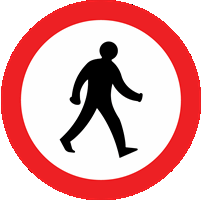
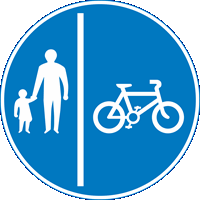
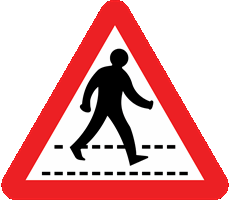
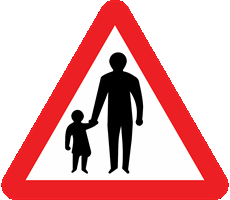
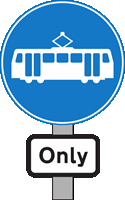

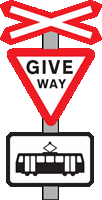
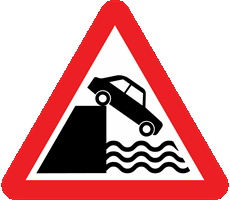
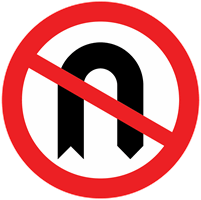
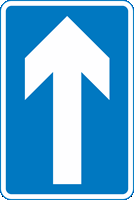
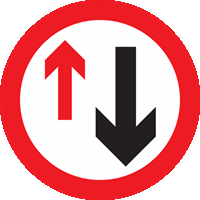
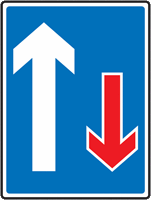

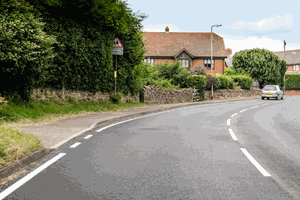


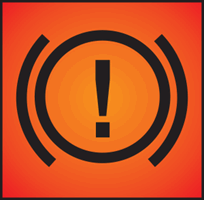















There are 4 comments
I got 48/50 i passed thank you so much it helped a lot.
Got 49/50. Easier than I thought, many thanks!
I will pass mine tomorrow, so stressful
Good luck!